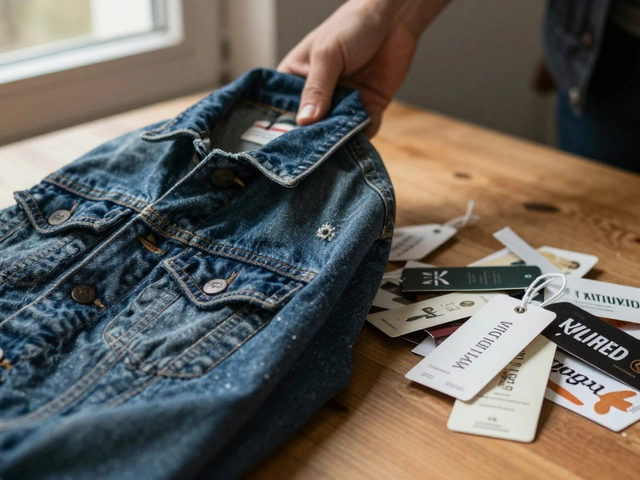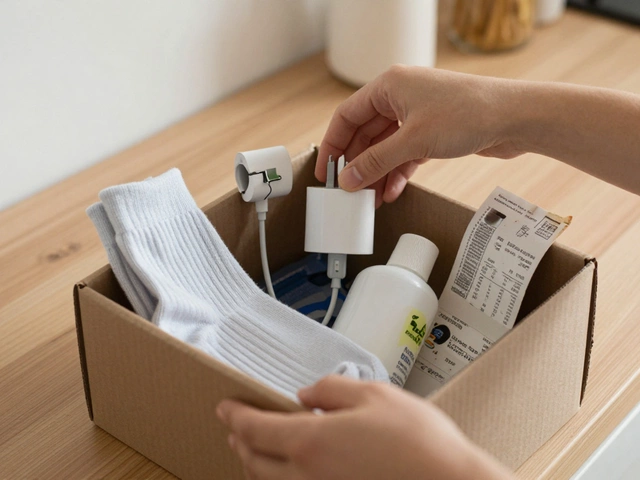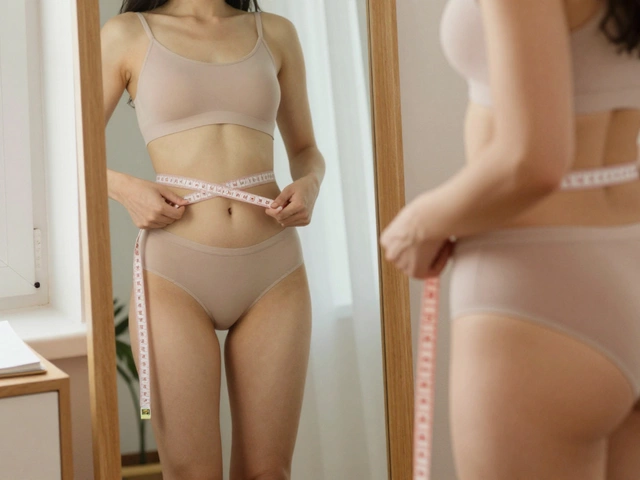Picture this: the average person throws away about 32 kilograms of clothing every single year. Yes, you read that right. While we're caught up chasing the latest drops and trends, the fashion industry quietly stands as the second-largest polluter on Earth—just after oil. That's a gut punch, isn’t it? So, hunting down genuinely sustainable fashion brands isn’t just stylish; it’s crucial for the planet.
What Really Makes a Fashion Brand Sustainable?
Let’s not sugarcoat it—"sustainable" gets tossed around a lot. But what does it really mean to wear sustainability on your sleeve? Genuine sustainable fashion brands don’t just slap an organic cotton label on a tee and call it a day. They rethink the whole process, from the raw materials to the way clothes land in your closet and, eventually, in a landfill—or better yet, a second life.
Here’s how real eco-friendly brands stand out:
- Sourcing low-impact materials: Bamboo, hemp, TENCEL, organic cotton—these require less water and almost no pesticides compared to conventional cotton or polyester. They also involve fewer harsh chemicals.
- Transparency: They let you peek behind the curtain. Patagonia and Eileen Fisher, for instance, share detailed supply chain info online so you know exactly who made your clothes and how.
- Ethics & Labor: If a brand can’t tell you who sews your hoodie or what their working conditions are, that’s a massive red flag. Leading brands pay fair wages and prioritize safe environments, from Africa to Vietnam.
- Supply Chain Emissions: Some go all out, investing in renewable energy, recycling water, and trucking goods by sea rather than air, cutting down CO2 like it’s out of style.
- Durability: Instead of making things to fall apart in a year, they build pieces to last. It’s such a simple idea, but it’s a game changer.
- End-of-life strategy: The best brands have take-back programs, free repairs, or upcycling initiatives to keep old clothes out of landfills.
Too often, big companies hide behind “greenwashing”—making things sound more planet-friendly than they really are. Watch out for gimmicks like “vegan leather” made entirely from PVC, which is a nightmare for most recycling systems. Ask for clear answers, and if you hear crickets, you know your answer.
One of the easiest tips? Look for third-party certifications—GOTS for organic fibers, Fair Trade for social impact, and OEKO-TEX for safe dyes. If you only glance at one thing, let it be these badges.
According to the 2024 Global Fashion Transparency Index, less than 12% of brands share any real data on their sustainable practices. So, when a brand is transparent, they’re one of a tiny minority. That’s worth supporting.
The Standout Leaders: Which Brands Actually Deliver?
Honestly, the sustainable fashion world isn’t just about earthy tones and linen joggers anymore. There’s real variety out there if you know where to look. A handful of brands are blazing a trail, refusing to stick to business as usual, and doing it with style.
Take Patagonia. If there’s a Mount Everest of green fashion, Patagonia is camped somewhere at the top. They donate one percent of sales to the environment, published an open-source supply chain map, and fought in court to protect public lands. Their Worn Wear platform helps customers buy and sell used clothes — extending the life of every jacket so thousands stay out of landfills. Around 89% of their product line uses recycled materials as of 2024. They even pay factory workers a living wage and push for unionization where possible.
Don’t count out People Tree, the slow-fashion pioneers from London. They’ve been Fair Trade since the 1990s, using hand weaving and plant-based dyes for their soft tees and summer dresses, all while creating skilled jobs in rural India and Bangladesh. People Tree never rushes into “fast” fashion—they launch two thoughtful collections per year, not twenty.
Then there’s Reformation, who put their carbon footprint right on every product page. They prove you can look Hollywood-chic while minimizing emissions: their cutting-edge LA factory uses renewable power and reuses 75% of production water. Plus, they’re a certified Climate Neutral company since 2021. Reformation also publishes data on each denim style’s CO2 and water savings side-by-side with traditional jeans.
If you’re after athletic wear, check out Girlfriend Collective. Their leggings are spun from post-consumer plastic bottles, and they’re totally up-front about dye processes, wastewater treatments, and factory locations (63% solar-powered, for you nerds out there). They even pay to recycle every worn-out hot pink sports bra so nothing gets trashed.
Eileen Fisher keeps things elegant and green for adults who simply want timeless. They reclaim worn-out pieces through “Renew” collection programs, selling them as-is or upcycling into stunning limited editions. As of April 2025, more than 2 million garments have avoided landfill thanks to their take-back scheme alone. Their “Vision 2028” plan promises all garments fully circular and regenerative by the end of the decade.
Here’s a quick snapshot of how some big names stack up:
| Brand | Main Material | Key Sustainability Lead | Notable Program |
|---|---|---|---|
| Patagonia | Recycled polyester | Worn Wear support | Living wage supply chain |
| People Tree | Organic cotton | Fair Trade certification | Handwoven textiles |
| Reformation | TENCEL™ | Carbon labeling | Water neutral operations |
| Girlfriend Collective | Recycled PET bottles | Closed-loop recycling | Take-back scheme |
| Eileen Fisher | Regenerative wool | Circular fashion design | Garment Renew upcycling |
You can spot fakes by checking whether they offer any traceable data or disclose partners. If all you find is vague promises and influencer posts, take a pass. Brands like the ones above back up their claims with cold, hard numbers.

How to Spot Greenwashing and Make Everyday Choices
Let’s get real for a sec—it’s way too easy to fall for green slogans and dreamy photos of sunlit fields. Just because a tee is “eco-conscious” doesn’t mean it’s saving the planet. Here’s how to spot the good, the bad, and the downright sketchy:
- Unverifiable Claims: Statements like “sustainably made” without clear proof or details. If they’re not linking to certifications, skip them.
- Sneaky Blends: Eco-brands sometimes add 10% recycled content to polyester and call it “sustainable.” Look for high percentages of renewable or recycled fibers.
- Over-inflated Hype: Many hype vegan but then use synthetic leathers that last a season, shedding microplastics into the ocean. Check what’s actually in the item and how it breaks down in the real world.
- Price doesn’t equal ethics: A $300 dress can be just as shady as a $15 tee. Never assume high price equals high morals.
Brands you can actually trust are transparent and specific. For example, Nudie Jeans tells you exactly where every button and thread comes from, publishes worker wage averages, and gets third-party audits each year.
Want a quick audit? Search the company’s website for the following keywords: “supplier list,” “material breakdown,” “environmental impact,” “living wage,” “take-back program.” If you can’t spot them in five minutes, something’s off.
A juicy insider tip: Download the Good On You app. It rates brands on environmental, worker, and animal impacts. Next time you’re bored in a dressing room, you can scan and check on the spot.
Don’t ignore resale and upcycling, either. Depop, Vestiaire Collective, and even eBay now have green badges for genuine recycled or upcycled pieces.
Many shoppers get tripped up by thinking buying "sustainable" clothes fixes everything, but the greenest purchase is often not purchasing at all. Wear, swap, mend, or resell—those actions slash your fashion footprint the fastest.
By 2025, it’s easier than ever to research before you buy, but the temptation for instant gratification is stronger, too. Keeping your wardrobe lean and intentional is a true fashion flex.
Building a Wardrobe That Actually Matters
Alright, no point getting all dressed up in eco-gear if half of it sits in your closet unworn. A more sustainable wardrobe starts with mindset, not just shopping smarter.
- First, do a closet audit. Lay out what you have, note what you truly wear, and be brutally honest with what’s just collecting dust. If you haven’t touched it in a year, it’s probably fair game for donation or resale.
- Favor timeless cuts and versatile colors over fast “microtrends.” Real talk: how many neon crop tops do you really need? Minimalist doesn’t mean boring—just choose what suits you and lasts.
- Support local makers and brands with small-batch production. This not only cuts carbon costs but also puts money in the hands of real artisans, not just shareholders.
- Get cozy with repair. Patch a hole, stitch a seam—YouTube is packed with quick lessons, and it’s oddly satisfying. Eileen Fisher and Patagonia even offer repair kits for your favorite pieces.
- Try swapping before shopping. Host a clothing swap with friends twice a year, or check local swap shops. You’d be amazed at what turns up.
- If you need something new, choose brands with a real end-of-life plan—garment recycling, repair subsidies, or take-back programs. It shows they care about their creations even after you’re done with them.
- Pay attention to care labels: wash cold, line dry, and avoid dry cleaners when possible. This adds literal years to your clothes’ lives and cuts your laundry energy bill in half.
Here’s a simple breakdown of actions and impact:
| Action | Estimated Impact |
|---|---|
| Buying one secondhand item | Reduces carbon emissions by up to 82% |
| Washing clothes in cold | Saves 1,800 pounds CO2/year |
| Wearing each garment 9 more times | Saves 25% water, 20% emissions |
| Repairs instead of replacing | Keeps 30% more clothes out of landfill |
The most sustainable fashion brand might look different for everyone. For some, it’s Patagonia’s recycled snap-T, for others, it’s thrifted Levi’s stitched up by a local tailor. The takeaway? Shop slowly, do your homework, and use what you have before adding something new. Sustainable fashion is a journey—just pick your starting point and stick with it.










